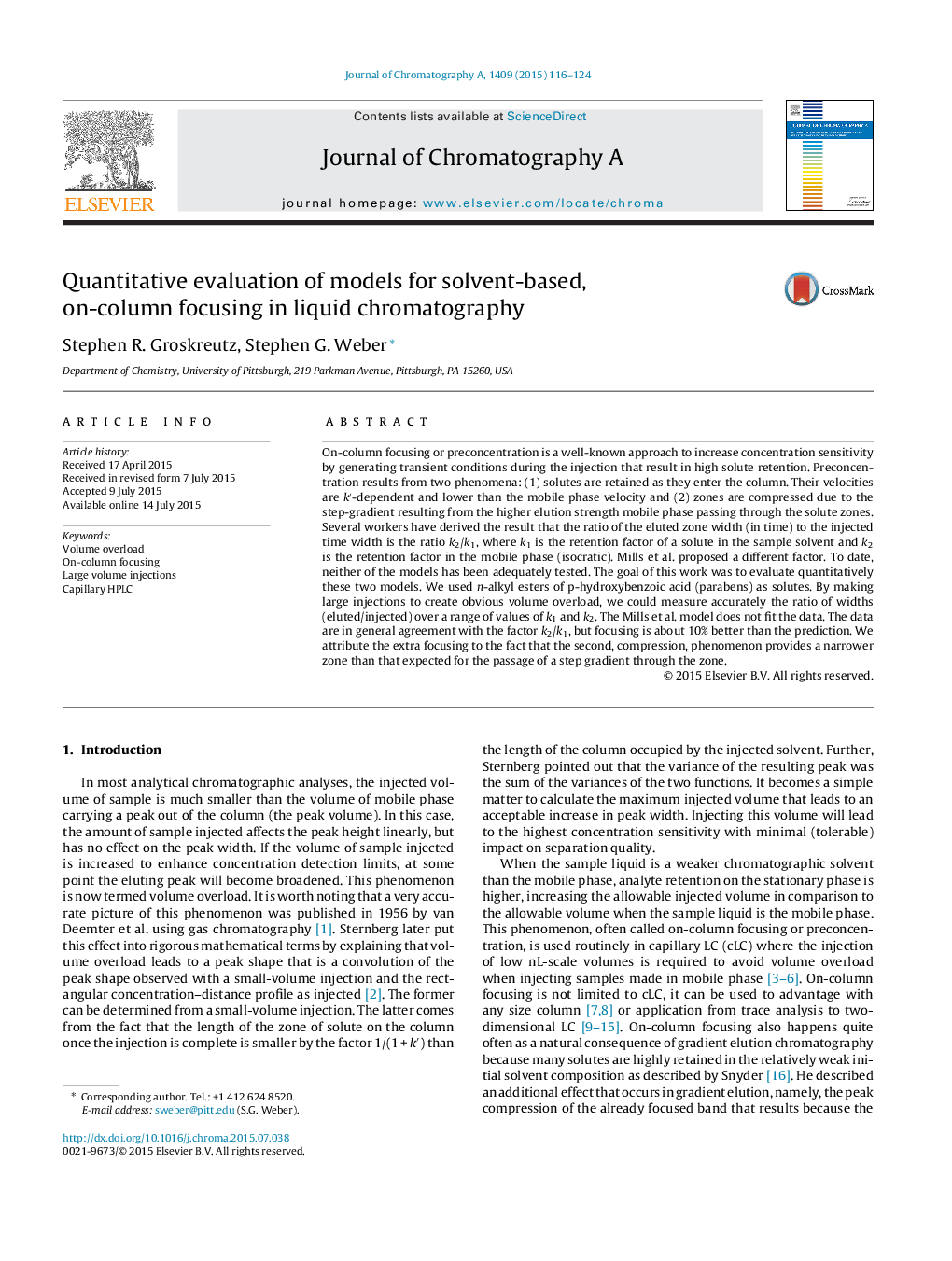| Article ID | Journal | Published Year | Pages | File Type |
|---|---|---|---|---|
| 1198997 | Journal of Chromatography A | 2015 | 9 Pages |
Abstract
On-column focusing or preconcentration is a well-known approach to increase concentration sensitivity by generating transient conditions during the injection that result in high solute retention. Preconcentration results from two phenomena: (1) solutes are retained as they enter the column. Their velocities are kâ²-dependent and lower than the mobile phase velocity and (2) zones are compressed due to the step-gradient resulting from the higher elution strength mobile phase passing through the solute zones. Several workers have derived the result that the ratio of the eluted zone width (in time) to the injected time width is the ratio k2/k1, where k1 is the retention factor of a solute in the sample solvent and k2 is the retention factor in the mobile phase (isocratic). Mills et al. proposed a different factor. To date, neither of the models has been adequately tested. The goal of this work was to evaluate quantitatively these two models. We used n-alkyl esters of p-hydroxybenzoic acid (parabens) as solutes. By making large injections to create obvious volume overload, we could measure accurately the ratio of widths (eluted/injected) over a range of values of k1 and k2. The Mills et al. model does not fit the data. The data are in general agreement with the factor k2/k1, but focusing is about 10% better than the prediction. We attribute the extra focusing to the fact that the second, compression, phenomenon provides a narrower zone than that expected for the passage of a step gradient through the zone.
Related Topics
Physical Sciences and Engineering
Chemistry
Analytical Chemistry
Authors
Stephen R. Groskreutz, Stephen G. Weber,
